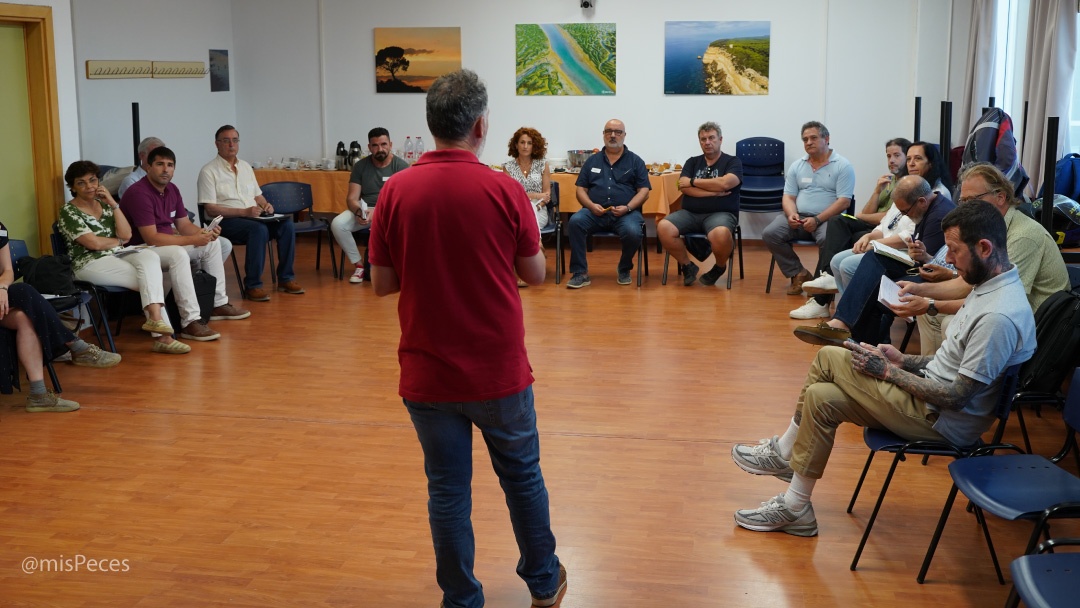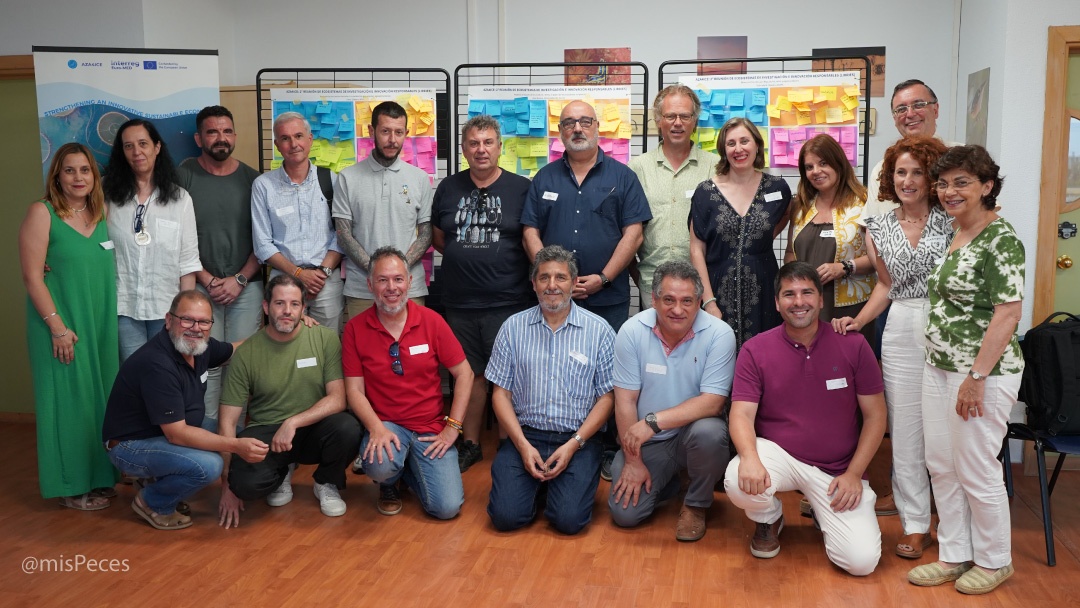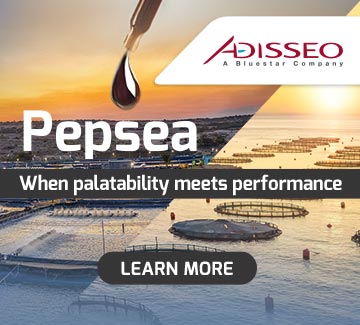
The second workshop of the European project AZA4ICE, held at the Puerto Real Campus of the University of Cádiz, focused on driving the transition towards a circular economy within the aquaculture sector. The event brought together experts from a range of disciplines to share insights, identify challenges, and explore opportunities for building more sustainable systems.
Structured as a training and knowledge exchange session, the event explored the key principles that underpin circular aquaculture: preserving ecosystems, prioritising the responsible use of resources, nutrient recycling, the adoption of renewable energy and waste minimization. These themes formed the backbone of a series of talks that provided a comprehensive overview of the sector’s current progress and future direction.
Enric Gisbert opened the technical segment with a session on aquaponics, highlighting its main features, practical applications, and the role it plays in enhancing circularity through the integrated cultivation of plants and grey mullet.
Next, José Manuel Guerra from the University of Seville delved into Integrated Multi-Trophic Aquaculture system, with a particular focus on the role of amphipods. He explored both the commercial potential and current limitations of these small crustaceans, which have proven especially valuable in the early development of key aquaculture species such as octopus and cuttlefish.
Eric Malta, representing the Andalusian Aquaculture Technological Centre (CTAQUA) centred his presentation on assessing production cycles through the lens of circularity. He unpacked the complexity of the processes involved, discussed analysis methodologies, and examined how these can be applied in real-world settings.
From an institutional perspective, Ángeles Díaz, from the Territorial Delegation of the Andalusian Department of Agriculture and Fisheries, offered a review of the regulatory framework. She emphasized the crucial role legislation plays in supporting the shift towards circular aquaculture and outlined the potential for further regulatory development. As she noted, while Andalusia already benefits from a supportive environment, it would be strategic at the national level to “establish a unified regulatory framework, foster greater interest from the business sector, and improve public perception of products cultivated through circular aquaculture”.
Gabriela Alessio, from the Andalusian Agency for Agricultural and Fisheries Management (AGAPA) presented an analysis of aquaculture by-products in the region, with a focus on marine-derived materials. She also highlighted the potential of algae and other raw materials within the framework of a circular bioeconomy exploring their role in emerging value chains.
As AZA4ICE coordinator Manuel Manchado summarised, the message is clear: aquaculture in Andalusia has both the capacity and the resources to move towards more circular and sustainable models. While technological barriers remain-particularly when it comes to integrating certain by-products into value chains-the current progress and shared vision among experts point to a promising future.
He added that proven models are already in operation, such as IMTA systems that combine water recirculation with natural pond farming, particularly in the Bay of Cádiz. Ongoing collaboration between public authorities, research centres and producers, backed by targeted funding, will be key to cementing this transformation.



